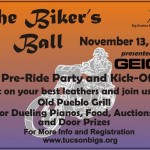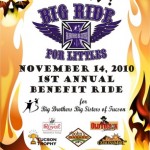Reprinted from PoliceOne
By John Bennett
Violent offenders are predators, and predators tend to prey upon the weak
Twice in my career I have heard stories of officers being feloniously killed in the line of duty, the impact of which has been of particular significance to me. In one case, an officer stopped a suspect who, unbeknownst to the officer, had committed a violent crime. The suspect was unaware if law enforcement had yet learned of his exploits and was prepared to kill the officer in order to avoid apprehension. This officer, too, was unaware — unaware of the circumstances surrounding the violator he had just stopped. Thus, the officer completed the traffic stop and allowed the suspect to get back underway. The next officer the suspect encountered, however, wasn’t as lucky.
The second incident involves a man who claimed God had told him to kill a police officer. The man armed himself with a firearm and staked out a busy intersection awaiting the arrival of his prey. After a period of time, he watched as a local policeman conducted a traffic stop. The suspect approached the officer from behind and killed him. During the investigation that followed, it was discovered that earlier in the day the suspect had observed another officer at that same intersection handling an accident. The suspect, however, chose to wait for another target.
Why? It was later determined in both incidents that the officers who were not assaulted possessed something the two victim officers did not: command presence.
In both cases, the suspects stated they chose not to assault the officers that first presented themselves because they did not feel they would be easy targets and could fail in their attempts. Both officers carried themselves and performed in a manner that led the ‘predator’ suspects to look for easier ‘prey’.
Beginning in 1992, the FBI published reports of three studies conducted involving felonious assaults on police officers: Killed in the Line of Duty: A Study of Selected Felonious Killings of Law Enforcement Officers (1992), as well as In the Line of Fire: Violence Against Law Enforcement (1997), and Violent Encounters: A Study of Felonious Assaults on Our Nation’s Law Enforcement Officers (2006). In these studies, researchers studied more than one hundred thirty (130) incidents in which officers were feloniously assaulted (both injured and killed) and interviewed several dozen officers and offenders.
One point in the Violent Encounters study particularly stood out: the bad guys size us up and scope us out.
While this is certainly nothing new, it confirms what many of us have (or should have) known all along. Following are a couple of salient points I gleaned from the study:
• Much like anyone else who interacts with another person, offenders assess people, including LEOs
… The most dangerous offenders in such situations are those who are often described as predatory, as psychopaths or as anti-social personalities.
… Because (offenders) do not experience the same levels of stress as most people, they are less distracted by either internal or external factors.
… In circumstances where (offenders) feel that an officer has the edge, they respond as one such predator advised, “I just sit back and wait — somebody gonna make a mistake. That’s when I win.”
• Suspects’ experiences with the criminal justice system resulted in familiarization with LE practices, as well as the opportunity to observe LE-related behaviors of different officers. Scrutinizing these behaviors helped the offenders learn how to evaluate all officers in general, regardless of the nature of the particular LE activity or agency.
… The offenders evaluated such actions as officers’ response times, types of approaches, as well as handcuffing, searching, and transporting procedures. Interaction with specific officers and agencies allowed the offenders to observe and evaluate a variety of officers performing their duties under specific circumstances. One offender stated, “I knew who was working which shift, when vice was working, who the lazy officers were, and who the hot dogs were.”
Human beings conduct this type of activity when encountering other human beings, whether we realize we’re doing it or not. EVERYONE we come into contact with is sizing us up and does so quickly.
In his book ‘Blink’, author Malcolm Gladwell describes a phenomenon called ‘thin-slicing’ — the ability of our unconscious to find patterns in situations and behavior based on very narrow slices of experience. In layman’s terms, ‘thin-slicing’ is our brain’s ability to filter out all but the essential information required to make quick judgments. And these judgments, although formed quickly, are surprisingly accurate. This occurs very quickly; so quickly, in fact, that most of us do not even realize we’ve done it. But it does occur and it is done to us.
Although we can do nothing to stop individuals from sizing us up, we can control how they perceive us through the aura we project. What we must consider is how we as police officers are going to be perceived by those who would do us harm, and what we can do to mold that in our favor.
For example, when you don your uniform and look in the mirror, what do you see? Is the individual in the mirror one who commands respect or gives off the signals of struggling prey? Do you project a professional aura or air of authority; or do you appear apathetic- as if you couldn’t care less? Are you confident or nervous, timid and unsure of yourself? As shallow as the human species can seem at times, only 35 percent of our communication between each other is of the verbal variety. That means that two-thirds of what we ‘say’ is transmitted through non-verbal means: body language and appearance. The body doesn’t lie.
But how can we cultivate that command presence — body language that conveys authority, confidence and respect? Start with introspection. Begin by conducting an honest self-assessment of your strengths and weaknesses, but BE HONEST. Lie and you’re not only hurting yourself, but you could cost someone — including YOU! — his or her life. List your strengths and weaknesses. If you’re honest, you’ll have a few actual strengths and several weaknesses. The secret then is to make the most of your strengths and work to improve on your weaknesses so eventually maybe you can move a few of them into the strength column.
Then ask yourself: Do I have confidence in myself?
Do you have confidence that you can perform your job effectively while protecting the rights of those you have sworn to protect… that you can handle threats as they present themselves to you… that you can successfully go home at the end of your shift without having jeopardized the safety of your fellow officers and the public… that you can take a life… that you can do this job RIGHT.
If that answer is “No”, you have some work and some soul searching to do.
To improve, build confidence in yourself by developing a thorough knowledge of the academic requirements of our job- statutory law, case law, law of arrest, search and seizure and policy. Know what you can and can’t do, especially when confronted by the street lawyer who challenges, “You can’t do that!”
Develop your physical skills. Study defensive tactics and sharpen your shooting skills. Develop that warrior mindset that allows you to become the predator and not the prey. Become confident in your abilities. Develop your body because as Major Dick Winters — the biggest brother of the ‘Band of Brothers’ — says, “Physical stamina is the root of mental toughness.”
Learn to make eye contact with those with whom you come into contact. The eyes are windows to the soul and can betray you by exposing fear or your lack of confidence to another.
Build credibility and become a leader. Then lead through example and show not only what to do, but how to do it. Good leadership requires confidence and outward displays of confidence (not cockiness) can evoke a command presence.
And in doing this, never allow your confidence to outrun your competence — you will fall and fall hard. Competence is measurable; confidence is subjective. Remain humble and compassionate; be professional and courteous- and have a plan to kill everyone you meet. Go home at the end of every shift; stay out of jail; keep your job.
And remember — everything in life is a graded event. Remember, they’re sizing us up.
About the author
John Bennett is a lieutenant with the Charleston (IL) Police Department and is in his nineteenth year with that agency. John’s career has been spent at the patrol-level and includes an eight year stint as the department’s first canine handler; during which time he handled a dual-trained Malinois, Rex. John is a black belt martial artist and in addition to his patrol and supervisory duties at the police department, is the chief firearms and defensive tactics instructor for his agency. John currently supervises a training staff of five instructors. An instructor himself, John holds numerous instructor certifications and specializes in use of force, defensive tactics and tactical firearms instruction. John has trained officers both in and outside his agency for more than 16 years; nationally and abroad. John can be reached by emailing rexdog8394@yahoo.com.

